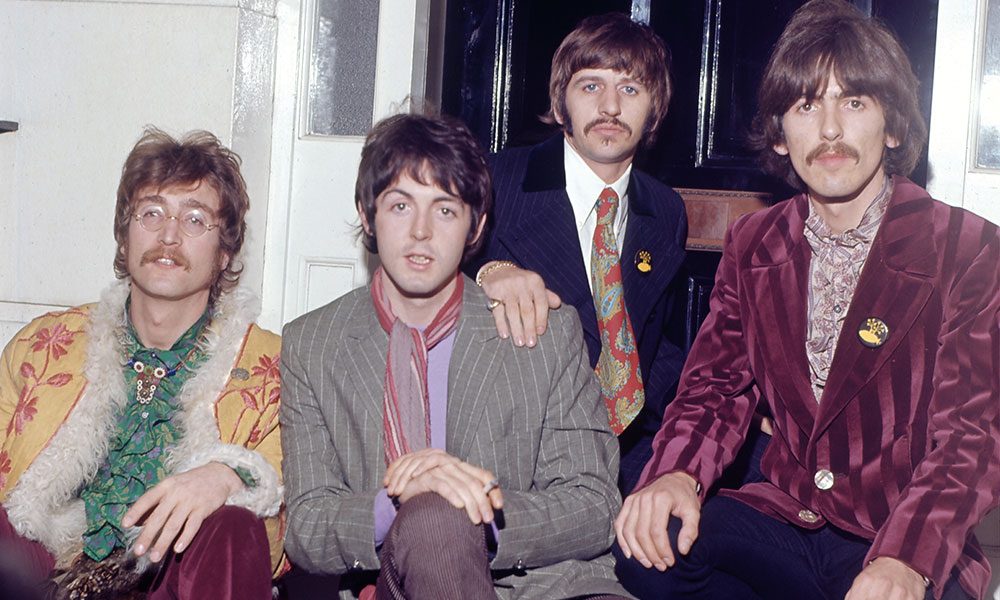In the early 1960s, The Beatles enchanted legions of fervent teenage fans with a rich array of romantic tunes. By 1964, practically every British woman under 30 yearned to hold John Lennon’s hand and bask in the charm of Paul McCartney. Following their iconic appearance on the Ed Sullivan Show in February 1964, these Liverpudlian sensations swiftly conquered the global stage, infusing a fresh dimension into the rock ‘n’ roll tradition popularized in the 1950s.
Fueled by influences ranging from Bob Dylan to Beat literature, cultural enlightenment, and mind-expanding substances, The Beatles underwent a profound transformation in the mid-1960s. The Lennon-McCartney songbook, once rooted in love ballads, now embraced a kaleidoscope of eccentric subjects, from yellow submersibles to a perforated city in Lancashire, showcasing a maturation of their artistic expression during the psychedelic era, particularly under the influence of John Lennon’s whimsical creativity.
The impact of LSD on songs like ‘Lucy in the Sky with Diamonds’ and ‘I Am the Walrus’ remains a topic of debate, but it’s universally acknowledged that Lennon possessed a penchant for the enigmatic. Lines like, “A soap impression of his wife which he ate / And donated to the National Trust,” may seem detached from reality, yet they often held a concrete origin. This particular line, from ‘Happiness is a Warm Gun,’ stemmed from Lennon’s use of William S. Burroughs’ cut-up method, incorporating snippets from various newspaper stories.
Diving into the narratives of iconic songs like ‘I Am the Walrus’ and ‘Lucy in the Sky With Diamonds,’ we find that the Eggman in the former was a moniker for Eric Burdon, lead singer of The Animals, while the inspiration for the latter came from a painting by Lennon’s son, Julian. Shifting the focus to the timeless ‘Strawberry Fields Forever,’ Lennon’s lyrical musings were rooted in a specific place, although the music video’s visuals, set in Knole Park, Kent, could be deceptive.
Despite the trippy video’s misdirection, Lennon’s Strawberry Fields were miles away to the north. In a nostalgic exploration of his childhood, ‘Strawberry Fields Forever’ delved into Lennon’s memories, much like McCartney’s ‘Penny Lane,’ with the real Strawberry Fields holding significant symbolic value. In a 1980 interview with Playboy, Lennon disclosed, “Strawberry Fields is anywhere you want to go,” portraying it as a retreat from his tumultuous youth and a sanctuary for blissful escapism.
Lennon described ‘Strawberry Fields Forever’ as one of his most honest songs in a 1970 interview, attributing its oblique lyrics to a psychoanalytic exploration of his psyche. He dismissed the traditional analysis, stating, “I haven’t met anybody that isn’t a complete blockage of pain from childhood, from birth on. Why shouldn’t we cry? They tell us to stop crying about twelve: ‘Be a man.’ What the hell’s that? Men hurt.”
The line “No one I think is in my tree” from the song illustrates Lennon’s sense of isolation among childhood peers, expressing his feelings of being too shy and doubtful. He reflected, “‘Nobody seems to be as hip as me,’ is what I was saying. Therefore, I must be crazy or a genius!” In essence, ‘Strawberry Fields Forever’ emerged as a deeply personal and introspective journey into Lennon’s psyche, capturing the essence of his complex emotions and experiences.
Listen to The Beatles’ enchanting 1967 single ‘Strawberry Fields Forever’ below.

